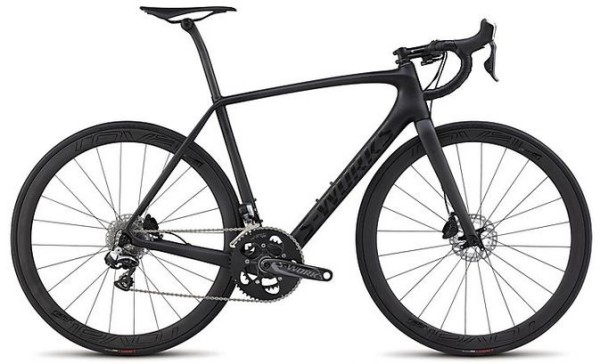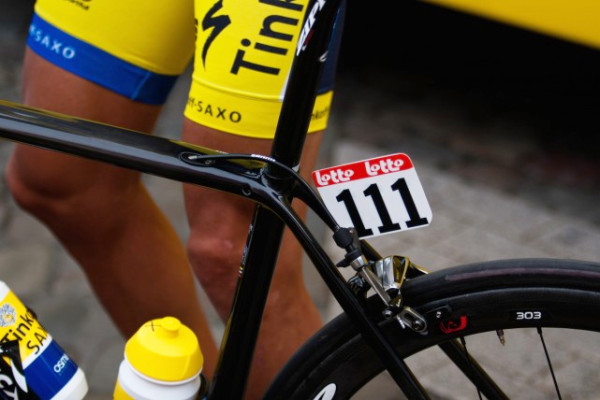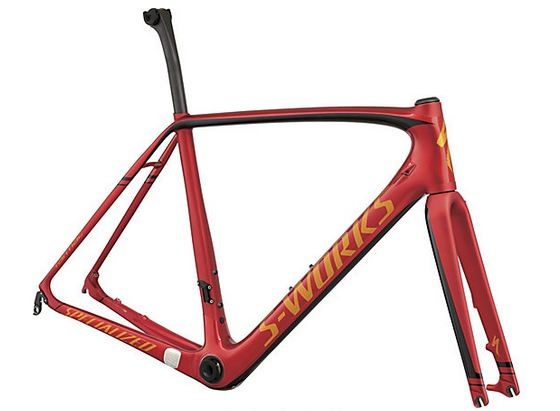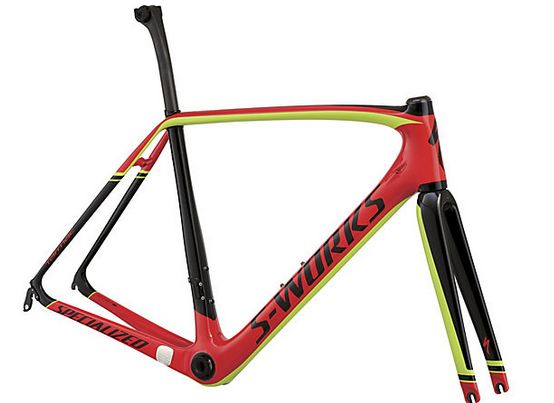 For the new redesigned Specialized Tarmac, the big story isn’t about the disc brakes or a new geometry, it’s about size specific optimization. On the outside, not much has changed except the paint, but what makes this new model worthy of the version 5 moniker is the completely new carbon layup.
For the new redesigned Specialized Tarmac, the big story isn’t about the disc brakes or a new geometry, it’s about size specific optimization. On the outside, not much has changed except the paint, but what makes this new model worthy of the version 5 moniker is the completely new carbon layup.
In the past, engineers have always developed a 54 or 56 cm size frame, then tweaked that formula to work for the full spectrum of sizes. On the road, this has translated into riders of different sizes having decidedly different ride experiences. For example, smaller riders found that the Tarmac SL4 exhibited understeer through hard cornering, while larger riders often gave the opposite feedback – and wished that the bicycle would feel more responsive.
So one of the major design goals for the new Tarmac was to create a bike that was stiffer and more responsive for larger riders, yet introduced flex for smaller riders, and maintaining agility across the board.
So how did Specialized achieve these lofty objectives?
Going forward, each size will have it’s own specific carbon layup to achieve the desired ride characteristics. There will three different headset bearing sizes and fork steer tubes to help dial in steering characteristics, and dedicated seat stays for each frame size, which will allow Specialized to tune rear triangle stiffness for optimized power and handling. For those familiar with the Roubaix SL4, many of these concepts will already sound familiar.
To help determine exactly what those stiffness and handling goals where, Specialized turned to their partners at McLaren. Using F1 inspired technology and techniques, they looked at rider feedback systems, and dynamic testing instrumentation to measure performance in real time.
They used these sensors to determine load at the stem, seatpost, fork, and frame, so they could learn how riders transmitted forces into the frame, onto the road, and from the road , back onto the rider.
Aside from the major charges to the carbon layup, there were no changes made to the geometry. There will be three versions available of the bike, either with discs or rim brakes, but the S-Works model will use a higher grade carbon to shed nearly a quarter pound. The Pro and Expert models will share the same frame. The Comp and Elite bikes will continue to utilize the existing Tarmac SL4 frame.
In addition to the development of new size specific construction, Specialized has also been hard at work developing a new disc model. The frame weighs aprx 80 gm more than it’s rim braking brethren, and utilizes a pretty unique system to keep shifting performance crisp.
While the majority of disc equipped road bikes utilize the 135mm hub standard popularized by mountain bikes, the Big S has instead built its platform around a special 135mm with a cassette that sits further inboard, where it would normally sit on a 130mm hub. This, in conjunction with a custom hanger that pushes the derailleur in an additional 2.5mm, keeps shifting performance on par with the rim brake model.
 Photo by Jakob Kristian Sørensen
Photo by Jakob Kristian Sørensen
The last major change is the new internal seat binder, which was first spotted under Roman Kreuziger a few weeks ago. By ditching the seat collar, not only did the frame shed a small amount of weight, but it allows the round 27.2mm seat post to flex slightly for increased comfort.
As with every new bike launched, this one also promises improved vertical compliance, reduced aerodynamic drag, a double digit increase in power transfer, and it’s awesome.
You can learn more at Specialized and stay tuned for more details!

